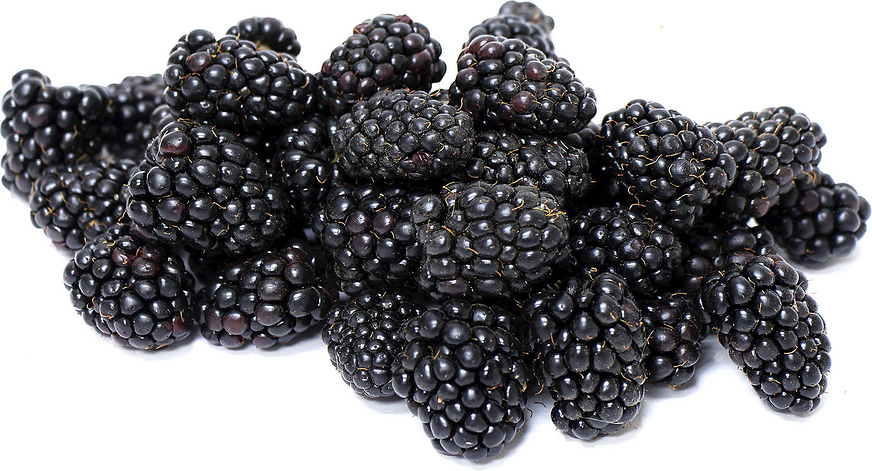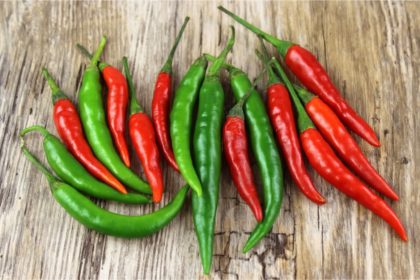Marionberries are blackberries developed by the USDA ARS breeding program in cooperation with Oregon State University. It’s a cross between the Chehalem and Olallie blackberries. Take a look below for 23 more fun and fascinating facts about marionberries.
1. The marionberry is currently the most common blackberry cultivar, accounting for over half of all blackberries produced in Oregon.
2. The marionberry is a vigorously growing trailing vine, usually producing just a few canes up to 20 feet long.
3. Marionberry vines have many large spines, and the fruiting laterals are long and strong, producing many berries.
4. The marionberry is glossy and, as with many blackberries, appears black on the plant, but turns a deep, dark purple when frozen and thawed. It’s medium in size and tends to be conical, longer than it is wide.
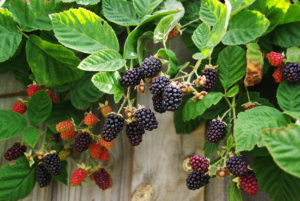
5. Marionberry has a somewhat tart flavor, fairly earth with traces of sweetness.
6. Marionberry is larger, sweeter and juicier than the Evergreen blackberry.
7. The complexity of marionberry’s flavor had led to a marketing label as the “Cabernet of Blackberries.”
8. The more dominant flavor of the marionberry has led to it dominating the current blackberry production. It’s often preferred over other blackberries as an ingredient in pies, ice cream, jellies, jams and other foods.
9. Marionberry was bred by George F. Waldo, as a mix between the small, flavorful Chehalem berry and the larger, better producing Olallie berry. Both the Chehalem and the Olallie berries are caneberry hybrids as well.
10. George F. Waldo made the initial marionberry cross in 1945, selected it as OSC 928 in 1948 in Corvallis, and tested it in Marion County and elsewhere in the Willamette Valley.
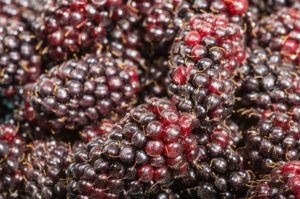
11. Oregon produces between 28 million and 33 million pounds of marionberry annually, with Marion County and Willamette Valley collectively accounting for over 90% of current production.
12. The marionberry’s growing conditions are perfectly adapted to the mild, maritime Oregon climate, with its mild rains and warm summers.
13. The harvesting season for marionberries is typically between July 10 and August 10, with a single acre producing up to 6 tons in a harvest.
14. As of February 2009. the Oregon Legislature has proposed to make the marionberry the official state berry, under House Joint Resolution 11.
15. Marionberries contain about 5.83 milligrams of ellagic acid per gram. As a polyphenol, ellagic acid offers anti-mutagenic, antioxidant and chemo-preventive properties.
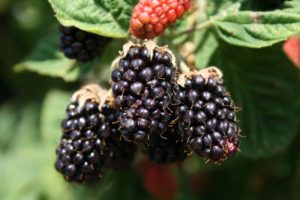
16. Marionberries contain a lot of vitamin C, rutin and Gallic acid. Vitamin C is vital in the regulation of immune system function, preventing inflammation and scouring the body for free radicals.
17. The marionberry is an excellent source of dietary fiber, a component essential for the regulation of weight, digestion, bowel movement and the prevention of diabetes and heart disease.
18. Fresh marionberries are darker colored, glossy and free from any blemishes. Wrinkly skin denotes that they are close to spoiling.
19. Marionberries are classified as a caneberry along with blackberries and raspberries. Caneberries are a family of delicate berries that grow on tough but thin woody canes and thrive in a cool, moist climate.
20. Marionberries freeze well and, due to their short season, they’re often sold already frozen or processed for preservation.
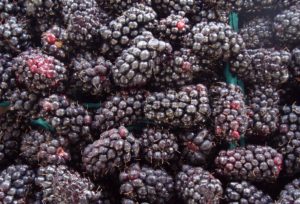
21. The berries reduce into an excellent sauce spiked with peppercorns and red wine to pair with pork chops, venison or duck.
22. Marionberries were named after the county in Oregon where they were developed, near Salem, Oregon.
23. Specializing in marionberries, raspberries, blackberries, and boysenberries, the Willamette Valley in Oregon is considered the Caneberry Capital of the World.

